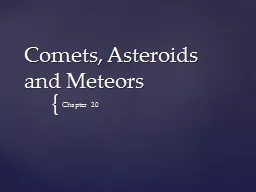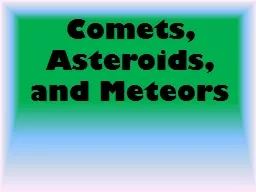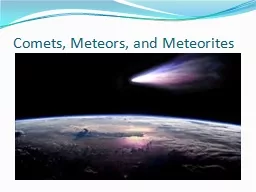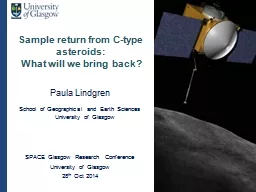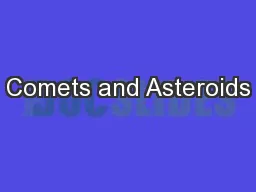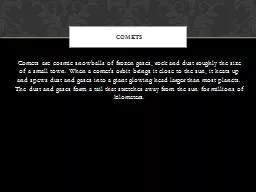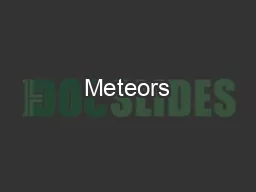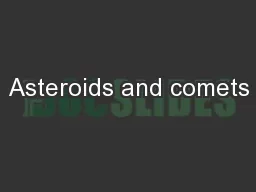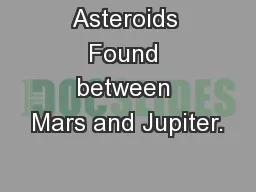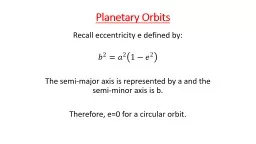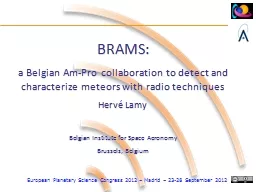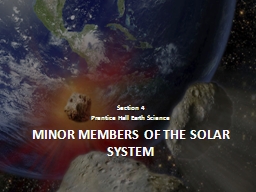PPT-Comets, Asteroids and Meteors
Author : debby-jeon | Published Date : 2018-10-31
Chapter 20 A loose collection of ice dust and small rocky particles Orbits are very long and narrow ellipses Comprised of 2 parts Head and Tail Originate from either
Presentation Embed Code
Download Presentation
Download Presentation The PPT/PDF document "Comets, Asteroids and Meteors" is the property of its rightful owner. Permission is granted to download and print the materials on this website for personal, non-commercial use only, and to display it on your personal computer provided you do not modify the materials and that you retain all copyright notices contained in the materials. By downloading content from our website, you accept the terms of this agreement.
Comets, Asteroids and Meteors: Transcript
Download Rules Of Document
"Comets, Asteroids and Meteors"The content belongs to its owner. You may download and print it for personal use, without modification, and keep all copyright notices. By downloading, you agree to these terms.
Related Documents

